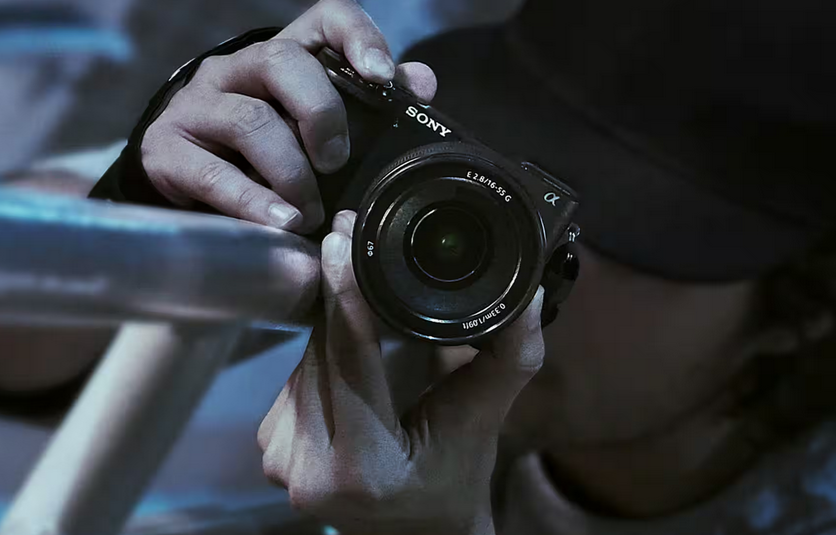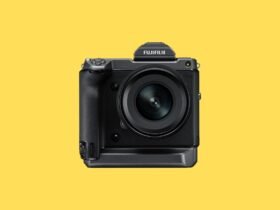Welcome back to FilmmakingElements.com, your ultimate destination for all things filmmaking! In today’s article, we are diving deep into the world of mirrorless cameras as we list the Top 3 Sony a6600 Alternatives.
The Sony a6600 has been a game-changer in the photography and videography industry, thanks to its incredible features, performance, and affordability. But we understand that every creative has their unique preferences and requirements, which is why we’ve curated this list of exceptional alternatives that are on par with the Sony a6600, and may even surpass it in certain aspects. So, buckle up and get ready to explore these outstanding options that could be the perfect fit for your next project.
1. Canon EOS RP

If you are looking for a mirrorless camera that can deliver high-quality images and videos, you might be interested in the Canon EOS RP and the Sony a6600. These two cameras have some similarities and differences that can affect your decision. In this article, we will compare the Canon EOS RP and the Sony a6600 based on their specifications and features, and see why the Canon EOS RP can be a good alternative for the Sony a6600.
Sensor- Full frame or APSC
One of the main differences between the Canon EOS RP and the Sony a6600 is the sensor size. The Canon EOS RP has a full frame sensor, which means it has a larger surface area and can capture more light and detail. The Sony a6600 has an APS-C sensor, which is smaller and has a 1.5x crop factor. This means that the Sony a6600 has a narrower field of view and less depth of field than the Canon EOS RP. The Canon EOS RP also has a slightly higher resolution of 26.2 MP, compared to 24.2 MP for the Sony a6600. However, the Sony a6600 has a BSI (back-illuminated) sensor, which can improve the low-light performance and dynamic range.
Autofocus and Lens Mount
Both cameras have a hybrid autofocus system that combines phase-detection and contrast-detection points. The Canon EOS RP has 4779 focus points, while the Sony a6600 has 425 focus points. The Canon EOS RP can focus in low-light conditions up to -3.5 EV, while the Sony a6600 can focus up to -2 EV. Both cameras can track subjects and faces, but the Sony a6600 also has eye autofocus for humans and animals. The Canon EOS RP uses the RF mount, which is compatible with a range of lenses from Canon and third-party manufacturers. The Sony a6600 uses the E mount, which also has a variety of lenses available. However, the RF mount has a shorter flange distance and a larger diameter, which can allow for more optical design possibilities and better image quality.
Design- Dimension and Weight Comparison
The Canon EOS RP and the Sony a6600 have a similar design, with a magnesium alloy body and weather sealing. However, the Canon EOS RP is slightly larger and heavier than the Sony a6600. The Canon EOS RP measures 133 x 85 x 70 mm and weighs 485 g, while the Sony a6600 measures 120 x 67 x 69 mm and weighs 503 g. The Sony a6600 has a deeper grip and a more ergonomic layout, while the Canon EOS RP has a more minimalist and elegant appearance. Both cameras have a single SD card slot, a USB-C port, a microphone jack, and a headphone jack. The Sony a6600 also has a built-in flash, while the Canon EOS RP does not.
Viewfinder and LCD monitor
Both cameras have an electronic viewfinder (EVF) and a rear LCD monitor. The EVF of the Canon EOS RP has a resolution of 2.36 million dots and a magnification of 0.7x, while the EVF of the Sony a6600 has the same resolution but a higher magnification of 1.07x. The LCD monitor of the Canon EOS RP has a resolution of 1.04 million dots and a diagonal size of 3 inches, while the LCD monitor of the Sony a6600 has a lower resolution of 0.92 million dots and the same size. Both LCD monitors are touch-sensitive and can tilt up and down, but the Canon EOS RP can also flip out to the side and rotate 180 degrees. This can be useful for vlogging, selfies, and shooting from different angles.
Battery life
The Sony a6600 has a clear advantage over the Canon EOS RP when it comes to battery life. The Sony a6600 uses the NP-FZ100 battery, which can provide up to 810 shots per charge when using the LCD monitor, or 720 shots when using the EVF. The Canon EOS RP uses the LP-E17 battery, which can only offer up to 250 shots per charge when using the LCD monitor, or 210 shots when using the EVF. The Sony a6600 also has a power-saving mode that can extend the battery life up to 2530 shots. Both cameras can be charged via USB-C, but the Sony a6600 can also be powered by an external source while shooting.
Video Capabilities
Both cameras can record 4K video at up to 30 fps, but the Canon EOS RP has a 1.6x crop factor, which means it uses a smaller portion of the sensor and reduces the field of view. The Sony a6600 uses the full width of the sensor, but it has an additional 1.23x crop factor at 4K 30p, and a 1.14x crop factor at 1080p 100/120 fps. Both cameras can output 8-bit 4:2:2 video to an external recorder via HDMI, but the Sony a6600 can also record 8-bit 4:2:0 video internally. The Sony a6600 also has a higher maximum bitrate of 100 Mbps, compared to 120 Mbps for the Canon EOS RP. The Sony a6600 also has more video features, such as S-Log and HLG profiles, zebra patterns, focus peaking, and time-lapse mode. The Canon EOS RP has a 30-minute recording limit, while the Sony a6600 can record up to 780 minutes.
Price
The Canon EOS RP and the Sony a6600 have different price points, depending on the configuration and the availability of discounts. The Canon EOS RP has a suggested retail price of $1000 for the body only, or $1300 for the kit with the RF 24-105mm f/4-7.1 IS STM lens. The Sony a6600 has a suggested retail price of $1400 for the body only, or $1800 for the kit with the E 18-135mm f/3.5-5.6 OSS lens. However, the prices may vary depending on the region and the retailer.
2. Nikon Z5

We will compare the Nikon Z5 and the Sony a6600 based on their specifications and features, and see why the Nikon Z5 can be a good alternative for the Sony a6600.
Sensor- Full frame or APSC
One of the main differences between the Nikon Z5 and the Sony a6600 is the sensor size. The Nikon Z5 has a full frame sensor, which means it has a larger surface area and can capture more light and detail. The Sony a6600 has an APS-C sensor, which is smaller and has a 1.5x crop factor. This means that the Sony a6600 has a narrower field of view and less depth of field than the Nikon Z5. The Nikon Z5 and the Sony a6600 have a similar resolution of 24.3 MP and 24.2 MP, respectively. However, the Sony a6600 has a BSI (back-illuminated) sensor, which can improve the low-light performance and dynamic range.
Autofocus and Lens Mount
Both cameras have a hybrid autofocus system that combines phase-detection and contrast-detection points. The Nikon Z5 has 273 focus points, while the Sony a6600 has 425 focus points. The Nikon Z5 can focus in low-light conditions up to -3 EV, while the Sony a6600 can focus up to -2 EV. Both cameras can track subjects and faces, but the Sony a6600 also has eye autofocus for humans and animals. The Nikon Z5 uses the Z mount, which is compatible with a range of lenses from Nikon and third-party manufacturers. The Sony a6600 uses the E mount, which also has a variety of lenses available. However, the Z mount has a shorter flange distance and a larger diameter, which can allow for more optical design possibilities and better image quality.
Design- Dimension and Weight Comparison
The Nikon Z5 and the Sony a6600 have a similar design, with a magnesium alloy body and weather sealing. However, the Nikon Z5 is slightly larger and heavier than the Sony a6600. The Nikon Z5 measures 134 x 100.5 x 69.5 mm and weighs 675 g, while the Sony a6600 measures 120 x 67 x 69 mm and weighs 503 g. The Sony a6600 has a deeper grip and a more ergonomic layout, while the Nikon Z5 has a more minimalist and elegant appearance. Both cameras have a single SD card slot, a USB-C port, a microphone jack, and a headphone jack. The Sony a6600 also has a built-in flash, while the Nikon Z5 does not.
Viewfinder and LCD monitor
Both cameras have an electronic viewfinder (EVF) and a rear LCD monitor. The EVF of the Nikon Z5 has a resolution of 3.69 million dots and a magnification of 0.8x, while the EVF of the Sony a6600 has a lower resolution of 2.36 million dots and a higher magnification of 1.07x. The LCD monitor of the Nikon Z5 has a resolution of 1.04 million dots and a diagonal size of 3.2 inches, while the LCD monitor of the Sony a6600 has a lower resolution of 0.92 million dots and a smaller size of 3 inches. Both LCD monitors are touch-sensitive and can tilt up and down, but the Nikon Z5 can also flip out to the side and rotate 180 degrees. This can be useful for vlogging, selfies, and shooting from different angles.
Battery life
The Sony a6600 has a clear advantage over the Nikon Z5 when it comes to battery life. The Sony a6600 uses the NP-FZ100 battery, which can provide up to 810 shots per charge when using the LCD monitor, or 720 shots when using the EVF. The Nikon Z5 uses the EN-EL15c battery, which can only offer up to 470 shots per charge when using the LCD monitor, or 390 shots when using the EVF. The Sony a6600 also has a power-saving mode that can extend the battery life up to 2530 shots. Both cameras can be charged via USB-C, but the Sony a6600 can also be powered by an external source while shooting.
Video Capabilities
Both cameras can record 4K video at up to 30 fps, but the Nikon Z5 has a 1.7x crop factor, which means it uses a smaller portion of the sensor and reduces the field of view. The Sony a6600 uses the full width of the sensor, but it has an additional 1.23x crop factor at 4K 30p, and a 1.14x crop factor at 1080p 100/120 fps. Both cameras can output 8-bit 4:2:2 video to an external recorder via HDMI, but the Sony a6600 can also record 8-bit 4:2:0 video internally. The Sony a6600 also has a higher maximum bitrate of 100 Mbps, compared to 60 Mbps for the Nikon Z5. The Sony a6600 also has more video features, such as S-Log and HLG profiles, zebra patterns, focus peaking, and time-lapse mode. The Nikon Z5 has a 30-minute recording limit, while the Sony a6600 can record up to 780 minutes.
Price
The Nikon Z5 and the Sony a6600 have different price points, depending on the configuration and the availability of discounts. The Nikon Z5 has a suggested retail price of $1400 for the body only, or $1700 for the kit with the Z 24-50mm f/4-6.3 lens. The Sony a6600 has a suggested retail price of $1200 for the body only, or $1800 for the kit with the E 18-135mm f/3.5-5.6 OSS lens.
3. Nikon Z50

We will compare the Nikon Z50 and the Sony a6600 based on their specifications and features, and see why the Nikon Z50 can be a good alternative for the Sony a6600.
Sensor- Full frame or APSC
One of the main differences between the Nikon Z50 and the Sony a6600 is the sensor size. The Nikon Z50 has an APS-C sensor, which is smaller than a full frame sensor and has a 1.5x crop factor. This means that the Nikon Z50 has a narrower field of view and less depth of field than a full frame camera. The Sony a6600 also has an APS-C sensor, but it has a BSI (back-illuminated) sensor, which can improve the low-light performance and dynamic range. The Nikon Z50 and the Sony a6600 have a similar resolution of 20.9 MP and 24.2 MP, respectively.
Autofocus and Lens Mount
Both cameras have a hybrid autofocus system that combines phase-detection and contrast-detection points. The Nikon Z50 has 209 focus points, while the Sony a6600 has 425 focus points. The Nikon Z50 can focus in low-light conditions up to -4 EV, while the Sony a6600 can focus up to -2 EV. Both cameras can track subjects and faces, but the Sony a6600 also has eye autofocus for humans and animals. The Nikon Z50 uses the Z mount, which is compatible with a range of lenses from Nikon and third-party manufacturers. The Sony a6600 uses the E mount, which also has a variety of lenses available.
Design- Dimension and Weight Comparison
The Nikon Z50 and the Sony a6600 have a similar design, with a magnesium alloy body and weather sealing. However, the Nikon Z50 is slightly larger and heavier than the Sony a6600. The Nikon Z50 measures 127 x 94 x 75 mm and weighs 450 g, while the Sony a6600 measures 120 x 67 x 69 mm and weighs 503 g. The Sony a6600 has a deeper grip and a more ergonomic layout, while the Nikon Z50 has a more minimalist and elegant appearance. Both cameras have a single SD card slot, a USB-C port, a microphone jack, and a headphone jack. The Sony a6600 also has a built-in flash, while the Nikon Z50 does not.
Viewfinder and LCD monitor
Both cameras have an electronic viewfinder (EVF) and a rear LCD monitor. The EVF of the Nikon Z50 has a resolution of 2.36 million dots and a magnification of 1.02x, while the EVF of the Sony a6600 has the same resolution but a higher magnification of 1.07x. The LCD monitor of the Nikon Z50 has a resolution of 1.04 million dots and a diagonal size of 3.2 inches, while the LCD monitor of the Sony a6600 has a lower resolution of 0.92 million dots and a smaller size of 3 inches. Both LCD monitors are touch-sensitive and can tilt up and down, but the Nikon Z50 can also flip out to the side and rotate 180 degrees. This can be useful for vlogging, selfies, and shooting from different angles.
Battery life
The Sony a6600 has a clear advantage over the Nikon Z50 when it comes to battery life. The Sony a6600 uses the NP-FZ100 battery, which can provide up to 810 shots per charge when using the LCD monitor, or 720 shots when using the EVF. The Nikon Z50 uses the EN-EL25 battery, which can only offer up to 320 shots per charge when using the LCD monitor, or 280 shots when using the EVF. The Sony a6600 also has a power-saving mode that can extend the battery life up to 2530 shots. Both cameras can be charged via USB-C, but the Sony a6600 can also be powered by an external source while shooting.
Video Capabilities
Both cameras can record 4K video at up to 30 fps, but the Nikon Z50 has no extra crop factor, while the Sony a6600 has an additional 1.23x crop factor at 4K 30p, and a 1.14x crop factor at 1080p 100/120 fps. Both cameras can output 8-bit 4:2:2 video to an external recorder via HDMI, but the Sony a6600 can also record 8-bit 4:2:0 video internally. The Sony a6600 also has a higher maximum bitrate of 100 Mbps, compared to 60 Mbps for the Nikon Z50. The Sony a6600 also has more video features, such as S-Log and HLG profiles, zebra patterns, focus peaking, and time-lapse mode. The Nikon Z50 has a 30-minute recording limit, while the Sony a6600 can record up to 780 minutes.
Price
The Nikon Z50 and the Sony a6600 have different price points, depending on the configuration and the availability of discounts. The Nikon Z50 has a suggested retail price of $860 for the body only, or $1000 for the kit with the Z 16-50mm f/3.5-6.3 VR lens. The Sony a6600 has a suggested retail price of $1400 for the body only, or $1800 for the kit with the E 18-135mm f/3.5-5.6 OSS lens.
So that’s it, there you go. These are the best alternatives you should look forward to if you are planning to buy Sony a6600.










Got a Question?
Find us on Socials or Contact us and we’ll get back to you as soon as possible.